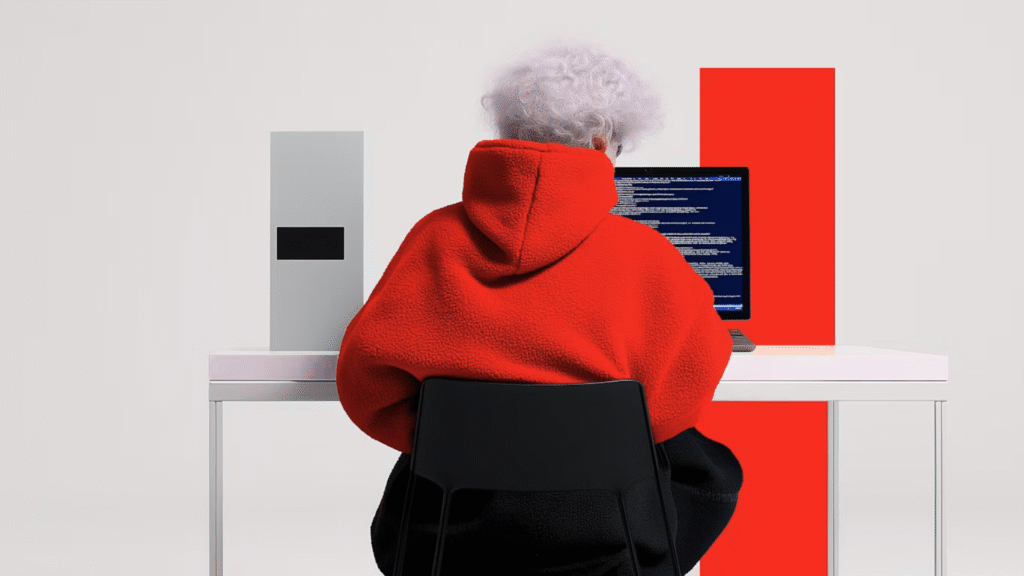Artificial intelligence is only as transformative as the teams behind it. As organizations integrate AI across operations, product design, and decision-making, a quiet challenge has emerged: teams often lack the right mix of technical, creative, and analytical skills to fully leverage it. Assessing AI readiness is now a strategic priority — one that determines whether technology investments result in productivity or stagnation.
The New Reality of AI Readiness
According to global workforce research from the OECD and IBM, organizations worldwide face a 50% AI talent gap as demand for AI-related capabilities expands beyond data science roles. What began as a technical skill shortage has evolved into a capability readiness challenge — spanning business analysts, marketers, researchers, and creative teams alike.
The modern workforce needs exposure to AI reasoning, data interpretation, and experiment-driven thinking. Yet, leaders often discover that readiness levels vary widely across departments. Many teams know how to use AI tools, but few understand how to design workflows around them or evaluate AI-generated results critically.
What Effective AI Skills Assessment Covers

Traditional skill audits — certifications or coding tests — no longer suffice. AI skills assessment must now measure both functional knowledge and adaptive ability.
Here’s what high-impact assessments evaluate today:
- AI Literacy and Application – Understanding prompts, logic, limitations, and bias in model outputs.
- Data Handling Competence – Ensuring ethical sourcing, labeling, and use of AI datasets in projects.
- Cross-Functional Collaboration – Integrating AI with creative, engineering, and business workflows.
- Decision Confidence – The ability to rely on AI insights while maintaining human accountability.
- Continuous Learning Readiness – Adapting quickly as AI tools, APIs, and frameworks evolve.
Companies such as Unilever and IBM have implemented AI-based competency platforms to measure and close these gaps efficiently, automating bias detection, and helping managers track skill growth over time.
From Tools to Frameworks: The Assessment Process
A modern AI-readiness program typically follows three stages:
- Baseline Mapping: Begin with a diagnostic survey or data-driven evaluation tool that benchmarks AI literacy and comfort levels by role. Identify areas where manual work dominates over AI-assisted workflows.
- Applied Simulation Tasks: Replace static quizzes with real team scenarios like using a generative model for campaign planning, summarizing reports with AI assistants, or coding simple analytic queries. These exercises test creativity, not just knowledge.
- Personalized Learning Plans: Use results to assign targeted upskilling paths. Teams working in content creation might pursue prompt-engineering challenges, while analytics groups deepen skills in model interpretation or results validation.
Stage 1: Baseline Mapping
Start with data-driven AI readiness evaluation that measures:
- Current AI tool usage across departments
- Comfort levels with AI-assisted workflows
- Knowledge gaps in AI fundamentals
- Team collaboration patterns with AI systems
Effective baseline mapping requires platforms that provide natural assessment opportunities through real-world usage analytics and team interaction patterns.
Stage 2: Applied Simulation Tasks
Replace static quizzes with practical AI skills evaluation:
- Content creation using generative AI models
- Data analysis with AI-powered tools
- Cross-team collaboration on AI projects
- Problem-solving through AI-assisted workflows
Stage 3: Personalized Development Plans
Create targeted AI capability building programs based on assessment results:
- Advanced AI integration for technical teams
- Prompt engineering training for content teams
- AI ethics workshops for decision-makers
- Collaborative AI workflows for project managers
Why Readiness Gaps Really Matter

The gap isn’t only technical — it’s cultural. Employees uncertain about AI tools hesitate to experiment or challenge outputs, which limits business impact. McKinsey’s latest digital adoption study revealed that companies with high internal confidence in AI consistently achieve double the implementation success rate of others.
Conversely, low readiness leads to tool fatigue. Teams toggle between platforms without a unified strategy — an issue that AI-powered skills mapping directly helps resolve.
Evolving Assessment with AI
AI is reshaping assessments themselves. Adaptive evaluation systems now analyze written responses, generate feedback loops, and even recommend personalized training content. These systems—used by companies like Cisco and Google—blend predictive analytics and natural language processing to measure not just what an employee knows, but how they think.
They provide feedback on:
- response relevance to strategic goals,
- ethical reasoning in AI-assisted decisions, and
- ability to blend automation with human creativity.
Such meta-assessments have cut onboarding times by 40% and improved measured skill retention across teams.
Building a Culture of Continuous Assessment
Readiness is not a one-time metric. It’s an evolving culture of experimentation and transparent feedback. Leading organizations now treat “AI-readiness checks” like cybersecurity drills — frequent, iterative, and tied to measurable outcomes.
- Encourage open reporting: team members should log challenges using AI to refine training focus.
- Reward proactive learners: those who share workflow improvements get recognition or internal certifications.
- Track readiness dashboards across departments to align hiring, training, and project goals.
Next-Generation Assessment Technologies
AI-Powered Evaluation Systems
Modern AI readiness platforms use artificial intelligence to assess human AI skills:
- Adaptive evaluation systems that personalize based on responses
- Natural language processing to analyze reasoning quality
- Predictive analytics for skill development recommendations
- Real-time feedback loops for continuous improvement
Companies like Cisco and Google report 40% faster onboarding times using these intelligent assessment platforms.
Continuous Monitoring Approach
AI skills assessment works best as an ongoing process:
- Regular skill check-ins like cybersecurity drills
- Usage analytics from collaborative AI platforms
- Peer feedback on AI-assisted project outcomes
- Performance metrics tied to AI tool adoption
Collaborative Assessment Through Team Platforms

Learning Through Application
The most effective AI skills evaluation happens during real work. Collaborative AI platforms enable:
- Natural skill assessment through project collaboration
- Peer learning from shared AI workflows
- Manager visibility into team AI adoption patterns
- Continuous capability building through hands-on experience
Building AI-Native Teams
Transform assessment from compliance exercise to strategic capability building:
- Reward proactive AI learners who share workflow improvements
- Track readiness dashboards across departments
- Align hiring strategies with AI skill requirements
- Create internal certification programs for AI competency
Measuring ROI of AI Skills Investment
Key Performance Indicators
Track the impact of AI skills assessment programs:
- Productivity gains from AI-assisted workflows
- Time savings through automated processes
- Quality improvements in AI-generated outputs
- Team satisfaction with AI tool adoption
- Innovation metrics from AI experimentation
Business Impact Metrics
Organizations with strong AI readiness programs report:
- 30% faster project completion times
- 25% improvement in output quality
- 40% reduction in manual task time
- 50% increase in cross-team collaboration
Building Your AI Skills Assessment Strategy
Getting Started
Implement effective AI skills assessment with these steps:
- Audit current AI tool usage across your organization
- Identify skill gaps through collaborative assessment exercises
- Create personalized learning paths for different roles and departments
- Establish continuous feedback loops for ongoing improvement
- Measure business impact of AI skill development initiatives
Long-Term Success Factors
Sustainable AI readiness programs require:
- Leadership commitment to ongoing skill development
- Cultural support for AI experimentation and learning
- Technology platforms that enable collaborative skill building
- Regular assessment updates as AI capabilities evolve
Choosing the Right Platform for Skills Assessment
As organizations develop their AI skills assessment strategies, selecting the right technology platform becomes crucial. The most effective solutions combine assessment with application, enabling teams to learn through real-world collaboration rather than isolated training modules.
Team-first AI platforms that offer multi-modal capabilities, usage analytics, and collaborative workspaces provide natural environments for ongoing skills evaluation. These platforms allow managers to observe genuine AI adoption patterns while teams develop capabilities through actual project work.
Qolaba‘s collaborative AI workspace exemplifies this approach by transforming traditional assessment into strategic advantage. Teams can experiment with 60+ AI models, build custom workflows, and develop skills through hands-on application—all while providing managers visibility into adoption patterns and skill development progress.
The credit-based pricing model eliminates barriers to experimentation, encouraging teams to explore AI capabilities without per-seat limitations. This approach naturally accelerates skill development through increased usage and collaboration.
The Future of AI Skills Assessment
As AI technology continues advancing, skills assessment strategies must evolve accordingly. Organizations investing in comprehensive AI readiness evaluation today will build competitive advantages that compound over time.
Smart teams choose platforms that combine assessment with application, learning with doing, and individual growth with collaborative success.
Ready to transform your team’s AI capabilities? The future belongs to organizations that can effectively evaluate, develop, and deploy AI skills across their entire workforce through collaborative, hands-on learning experiences.





